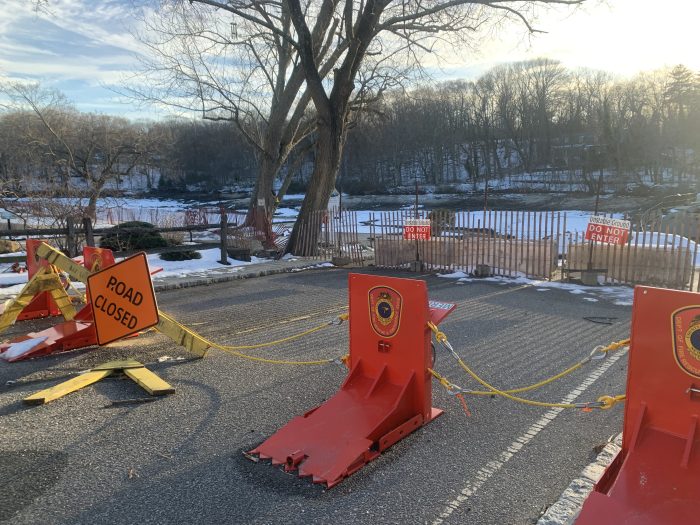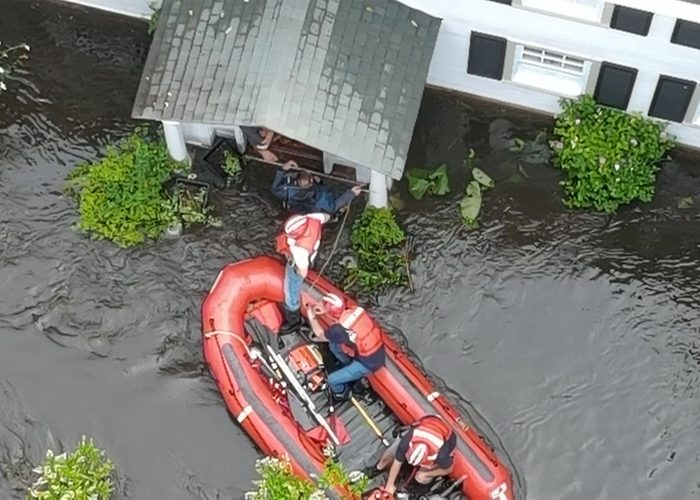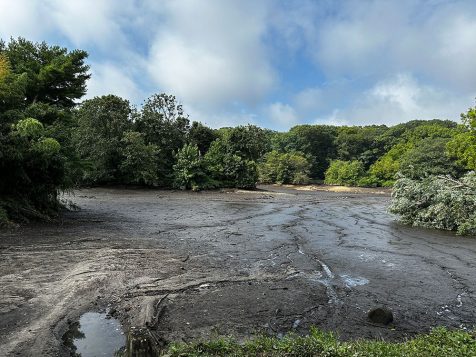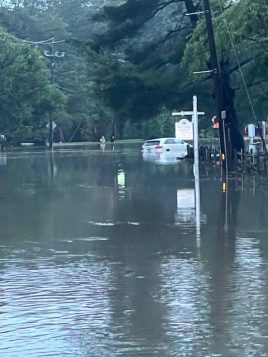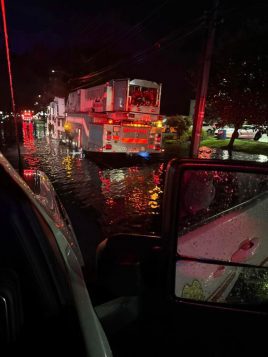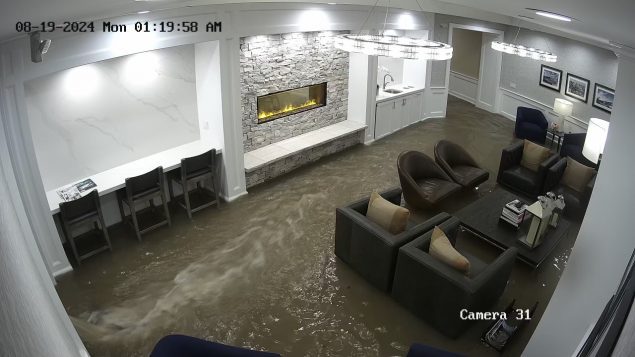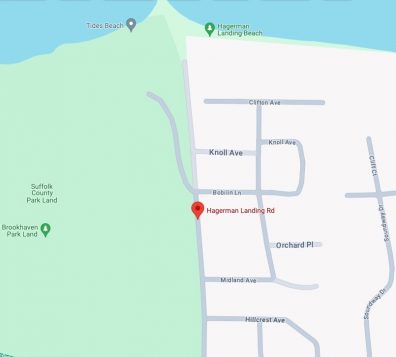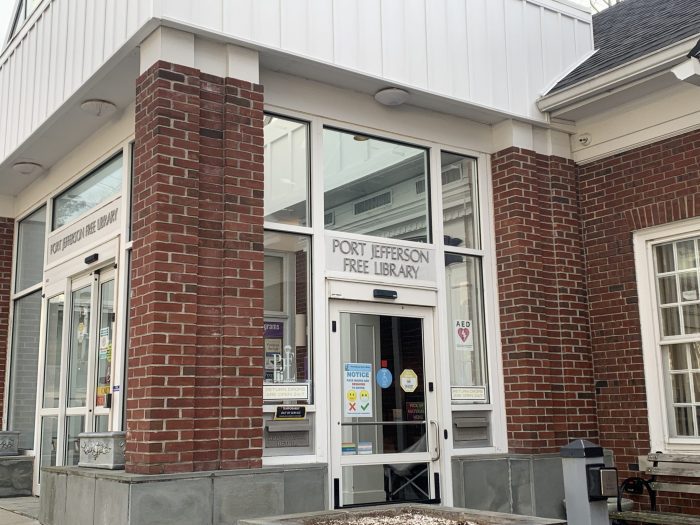By Sabrina Artusa
Six months after the Aug. 19 storm that damaged infrastructure, washed away the dams at Stony Brook Mill Pond and Blydenburgh County Park’s Stump Pond and upturned Harbor Road in Stony Brook, community pillars such as the Smithtown Library and Stony Brook University are on the mend.
The storm, which unleashed 9.4 inches of rain in only 24 hours, flooded the lower level of the Smithtown Library, bursting one of the windows and completely filling the area with water. Since the library sits at a lower grade, the water from higher grades flowed to the building and down the staircases on either side, overwhelming the sump pump and clogging it with leaves; therefore, it was not only 9 inches of water that flooded the library, but 8 feet.
However, walking through the Smithtown Library today, it would be difficult to discern evidence of the storm on the first floor or the mezzanine. The bookshelves and tables look relatively untouched; it seems that at any moment a library page might round the corner with a cart of books or a high school student will settle down at one of the tables. In a few months — April, possibly, according to Library Director Robert Lusak — the library could open again.
“In order to bring people back into the building, first we need power obviously, we need HVAC, we need heat and air-conditioning functioning, we need to have the elevator working, we need to have fire sprinklers operational … so there are a lot of factors that need to come into play before we can open the building,” Lusak said. The library’s architect, in collaboration with the Federal Emergency Management Agency and the Division of Homeland Security and Emergency Services, has put together “a two- to three-inch book” detailing the steps to reopening.
Temporary power has been restored. “Everything is moving along pretty well,” Lusak said.
Lusak and the rest of the library staff have been working with FEMA to account for damages to potentially get up to 75% of eligible costs reimbursed. The staff listed every item that was destroyed. One of the main obstacles, however, is the time-consuming process of ordering the necessary materials and the months it takes to ship.
“It is really the equipment that we need to reinstall that is keeping us from moving forward,” Lusak said. “When we have to wait for materials we have to wait 6 to 8 weeks in some cases. That is what we need in order to open the building up.”
Next month, Lusak and other staff members are flying to Michigan to evaluate the archive renovation progress done by Prism Specialties. The Richard H. Handley Collection, which features centuries-old documents and maps, was situated on the lower level. On the day of the storm, however, the water detection system failed and water infiltrated the room.
Lusak will have to determine which archives should be restored, such as precious original copies, and which would not be worth the expense, perhaps second copies. The cost of archival restoration already amounts to over $700,000. The archives will be considered by FEMA for reimbursement.
Lusak said that the designers will begin to redesign the lower floor this week. Since the first floor and mezzanine are nearly ready to be opened to the public — after the elevator, heating, ventilation and air-conditioning system and electricity are restored — Lusak plans to open the upper levels and have construction on the lower floor occur simultaneously.
In addition, the storm has exposed issues in the grading and stairwells. “We are looking at ways of safeguarding the building to make sure a situation like that never happens again … we are going to change the grading there [and] we are going to address the stairwells.”
At Stony Brook University, the rainfall affected 61 buildings, according to university officials; the Ammann and Gray residence halls were hit the hardest, and students residing there had to be reassigned to other buildings.
Vice President for Facilities and Services Bill Hermann wrote in an email, “In response to the flooding of our residence halls, we advocated for and will be relocating core facilities infrastructure (boilers, electrical equipment, IT and fire alarms) to upper floors.”
The university paid for a comprehensive storm infrastructure study which, according to Hermann, “revealed that our campus growth over the years had not been matched by adequate increases in storm infrastructure capacity.”
The university already addressed some of the weak spots dictated by the study, such as collapsed sections, but still has stormwater maintenance plans in the horizon, one being a plan to implement a stormwater detention and retention system under the athletic stadium surface lot to manage runoff.
“This mitigation is needed to upgrade and modernize the campus storm infrastructure to meet the current demands,” Hermann wrote.
At this time, Gloria Rocchio, president of the Ward Melville Heritage Organization, was unable to comment on the damage to Harbor Road, the ownership of which is debated as it crosses into Head of the Harbor.
Head of the Harbor Mayor Michael Utevsky said that discussions are progressing.

